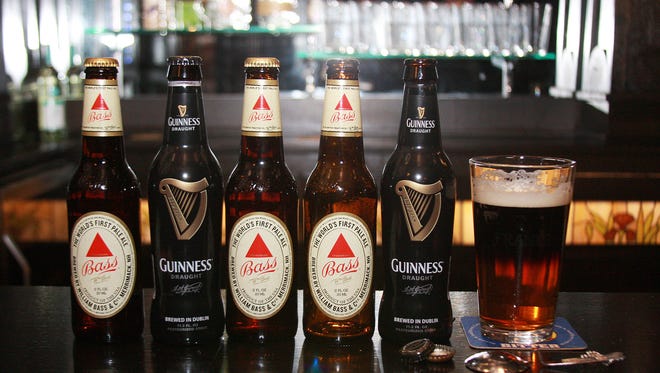Russo: Why not try a beer with your next beer? It's the fun of blending

The thing craft beer has done more than anything else is to have broken open the flavor stereotypes.
There are more flavors, styles and colors than there ever have been and that’s just the baseline. Infusing your own (or your bartender’s) beer-blending creativity and preferences means that there is literally an infinite number of beers to try.
If you’re not familiar with the practice, blending beers is pretty much what it sounds like, adding two beers together to get a third. The most well-known of these probably is the Black and Tan, often made with Guinness and Harp.
But another welcome combination was a stout and a pale ale, like Guinness and Bass Pale Ale.
The origins of blended ales probably has more to do with practicality than it does with taste. When ales were served exclusively from the casks in which they were fermented, they could go a little flat. Adding a newer, more carbonated beer to the older one gave it a little more pep. It also was a good way to take the edge off a higher-alcohol beer.
The practice was, and still is, a primarily British endeavor. A friend of mine, Edd Draper, is originally from England and tells a story about how his grandfather would blend beers as a way of getting a little more for his buck (or, I guess, pound):
“My grandad often used to drink Brown and Mild, and being good working class stock there was an economic reason for it, rather than for livening up a flat Mild. The landlord would usually pour a bit more than half a pint of Mild into a pint glass, so as not to be accused of shorting on pours,” he said. “Then he would open up a standard 12 oz bottle of Brown Ale and pour what would fit on top, and then pass the full pint glass and the almost empty bottle of Brown Ale to the customer.”
The result was a little more than 20 ounces of beer for the cost of a 16-ounce pint, plus a beer that wasn’t going flat.
Here, though, as a greater number of people start hanging out in craft brewery taprooms, blending is becoming more popular on taste possibilities alone. You’ll see it more during slow afternoons or early evenings when the taproom is quiet and the talk turns almost exclusively to beers.
People get excited about playing with the beer and answering “what if” taste questions with practical experience.
More from Russo:Definitely attempt this at home: Craft beer cocktails
More:SeaQuench Ale leads way for Dogfish Head's booming year
The craft beer revolution is kind of built on this positive taproom experience. Craft always has been about hanging out and having fun, with the beer as kind of a center, a focal point for conversation. Maybe you’re not ready to discuss the geopolitical environment with a stranger, but surely you can talk about the beers without alienating anyone.
Along the way, you can discover there is so much more to blending beers than just a Black and Tan.
Flat beer is pretty rare in today’s breweries, but the interest in moderating tastes isn’t. With the rise of sour ales and fruit IPAs, texture and flavor can combine in all sorts of fun ways.
Because they tend to be a little more flavorful, mixing darker beers with sour beers is a great place to start. It is kind of like adding, say, cranberries to chocolate. The sour fruit with the roast coffee and chocolate flavors that a big stout often has can be a revelation about the possibilities of blending.
With this analogy in mind, finding new ways to blend just takes a little time and willingness to drink beer. Adding amber beers or lighter pale ales to IPAs can reduce the bite or, conversely, add a little bite to a beer that could use it.
Beyond the sweet and bitter, salt and sour combinations, there’s always something on tap at a local brewery that might be a little too “out there” for some drinkers. Simple dilution of, say, a spicy hot pepper IPA with a regular IPA can turn something you’re not nuts about into your favorite beer.
Next time you order of pint of something you end up not being crazy about, get a taster glass of something similar and see if a sip-by-sip blend changes your mind.
Breweries do sometimes pre-blend beer. A local one that comes to mind is Nouveau Rouge, a Flanders Ale from Evolution Craft. Flanders are sour aged beers that are blended with sour unaged beers to moderate the favor. It can be an acquired taste, but if you’re a sour fan it is worth it.
Still, the real fun is to test drive blending beers at a taproom. The odds are the bartender will have an excellent sense of the beers on tap and probably already has a few good combinations in mind.
More:Sweeping craft beer rule changes sought by Maryland comptroller
More:Local craft brewers stick together to fight big beer buyouts